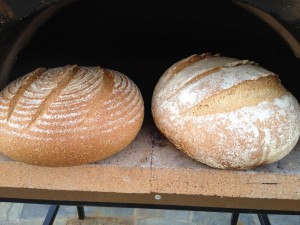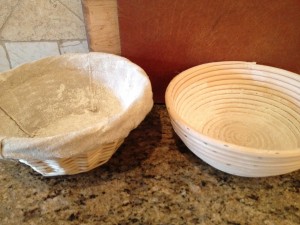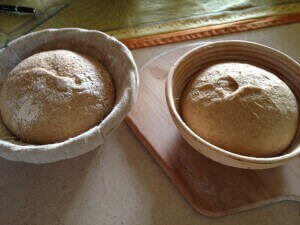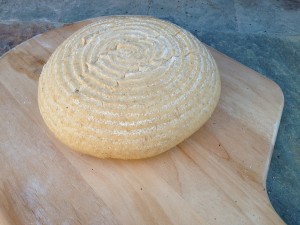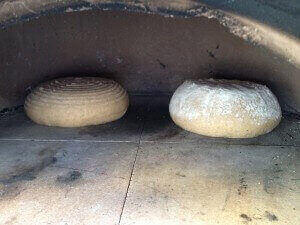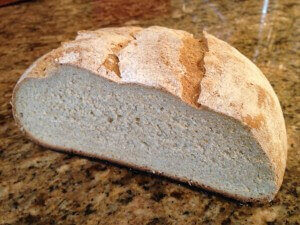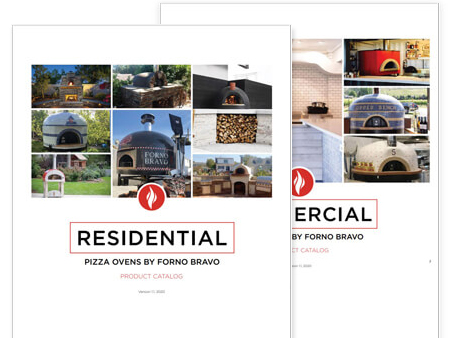Whole Wheat Boules in a Small Pizza Oven
May 09, 2012Posted by Forno BravoI am enjoying having a small oven in our side garden for the same reasons as the many people who have who have decided to buy our smaller ovens—the Primavera and Andiamo. They are easy to manage, they fire up really quickly and they are just a blast to use. Don’t let the smaller size deceive you; you can do a lot of serious pizza and bread baking in a smaller oven.
Yesterday my Presto prototype was sitting just outside our side door, calling out to me to bake something, so I decided to make bread. And after my short tangent on white whole wheat flour in my Bread in a Small Oven blog, I decided to make a couple of whole wheat boules. But as I don’t have an active sourdough culture, I didn’t have a lot of time, and I was looking for some immediate gratification, I made what is basically a bread flour yeasted dough recipe, and substituted white whole wheat flour.
I am sure there are purists somewhere turning over in their graves—and I will be the first person to admit that I was breaking a lot of rules and cutting a lot of corners, but hey, it was a lot of fun. And my bread was pretty good.
My dough recipe was 1kg of white whole wheat flour, 10 grams of yeast, 20 grams of salt and 650 grams of room temperature water. I did not proof my yeast (actually I never proof my yeast), and I did not add olive oil or honey. And because I was short on time, I skipped the bulk fermentation (yes, I know). I mixed the dough for 10 minutes on the level 2 setting on my KitchenAid mixer, and then hand kneaded the dough on the counter for a couple of minutes to try to make it more silky.
Then, rather than doing a bulk fermentation, I correctly folded and shaped two boules—making sure that I created a nice, taut skin across the top of the loaf. I sealed the seam and put one boule in a cane baneton, and the second in a linen lined basket. I cover them and let them proof for nearly two hours. You really don’t get the rise with whole wheat flour that you would see with bread flour, and they needed the time.
Continuing with my theme of being efficient, I built a nice top-down fire and got a serious fire burning in my oven. After less than an hour and 2 pieces of firewood split into smaller pieces, I left like the oven has stored enough heat to bake my bread (and time was running out), so I shoveled out all of the burning wood, coals and ash and let the oven cool for just a few minutes before I swabbed the deck with a damp towel.
Interestingly, you would normally allow a well-fired oven to cool down and evenly share its heat, but in this case I need to bake my bread before dinner. So one thing I found was that the floor of the oven was quite a bit hotter on the right side than the left—because the fire had been bigger on that side. And the bread baked differently on the two sides. I am not saying this as something I recommend, but I think it’s fun after all of these years to still be learning new things about how wood ovens behave.
I popped the bread into the oven while the dome temperature was round 600ºF, knowing that the oven would cool pretty quickly and that whole wheat loaves take longer to bake than white bread flour loaves.
And it all came out really well. The oven spring was not what I would have liked, and as usual my grigne was not very good, but overall, I am pretty satisfied. The bread itself worked really well with dinner that evening, and (as usual) for toast and sandwiches over the next day or so. The bread below is one and a half days old. Not bad.
Maybe it’s time to make that emotional commitment to maintaining a sourdough culture again. 🙂



